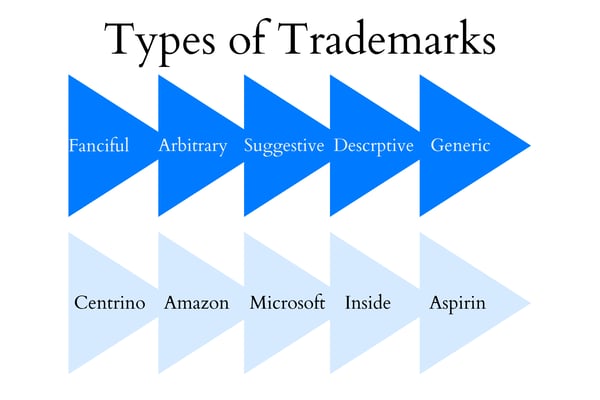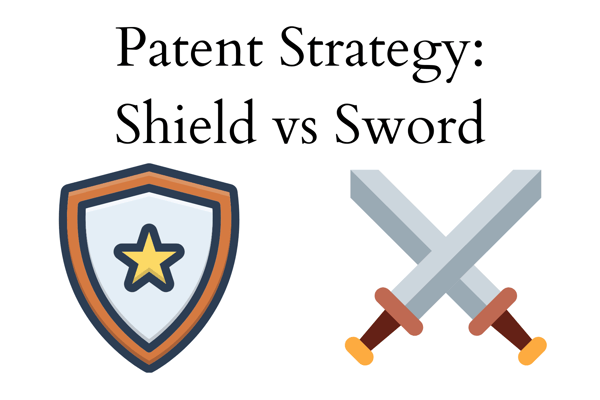Layered Intellectual Property is a way for smaller businesses to structure their IP.
LIP creates awareness and protection within a company for new or old inventions.
In general, ideas are worth nothing unless there is a system or organization behind them. If you have a great idea, you need to then act on it and create something from your vision. But, creating something from nothing generally takes a long time. It is impossible to create a billion dollar company from one patent in one year. Instead, you need a myriad of IP over the course of several years, or even decades. Intellectual property is a tool to protect billion dollar ideas and ensure that your work is safe in the market.
-png-1.png?width=600&height=400&name=Untitled%20design%20(4)-png-1.png)
Ocean Tomo, an IP brokerage firm, performed a study on the S&P 500 and the IP within it. They estimated that approximately 81% of the S&P 500 Market Cap is related to intangible rights and intellectual property. This sounds outrageous at first, but less crazy the more you think about it. What would Nike be without the Swoosh? What would Intel be without their utility patents?
From the US Patent and Trademark Office's (USPTO) perspective, there are only four qualities that have value when creating new IP. Those four requirements are: Utility, Expression, Source Identification, and Competitive Advantage. When creating IP, a person must include all of the aforementioned requirements.
There are also four different types of IP. The four types are Trademarks, Copyrights, Trade Secrets, and Patents. A great company will use a variety of intellectual property techniques in their toolbelt. Check out this article to learn more about IP for small businesses. Below we will take a look at the 4 types of IP, and 3 things you need to know about each of them.
Original work of authorship
Fixed in tangible form
Creative expression is protected, not utility
A copyright gives the owner exclusive right to reproduce and distribute a particular work. You are able to copyright tangible expressions of art or authorship. This includes things like sculptures, paintings, music, etc. You can not own a copyright for something that is a utility. For example, there is a famous court case involving a bottle top design and copyrights. The court ruled that because bottle tops are useful and have a purpose, they can not be copyrighted. Therefore, you are only able to copyright designs that do not have a utility (you would need a patent for that).
Novel (New)
Utility
Non-Obvious
Most medical devices and pharmaceuticals are covered using utility patents. They are utilities because they have a use and purpose (unlike what you would use a copyright to cover). Patents must be new and non-obvious. Non-obvious means that an average professional in the particular field must have not already known it. Non-obviousness is very hard to prove because if there is just one source disproving non-obviousness, your patent will be denied. Learn more about how other patents affect you here. The strength of a patent is determined by the way in which it was written, specifically the claims page.
Unique
Source Identifier
Secondary Meaning
Trademarks are used to identify and differentiate products in the marketplace. Trademarks are typically a picture or drawing that a customer can use to identify a product, like the McDonald's golden arch or the Nike swoosh. However, there are varying levels of trademark strength. Refer to the graphic below for some examples.

As you can see, the strongest types of trademarks are ‘Fanciful’ trademarks. This is when you make up a word, and have your product associated with that word. An example is Adidas or Intel Centrino, like in the example above. Another option is ‘Arbitrary’ trademarks, like Amazon. Although Amazon is a river in Brazil, many American citizens associate it with the online delivery and retail service. A ‘Suggestive’ trademark is like a mash up. For example, Microsoft is a combination of microcomputer and software.
On the weaker end of the spectrum, there are ‘Descriptive’ trademarks. These are products that describe whatever service they provide. For example, Intel Inside is a word to describe that a computer is equipped with Intel products. A federal court would not allow this to have Federal Registration (®️); instead Intel is allowed to use a Common Law trademark (™).
What is great about trademarks is that they can be renewed for very long periods of time. This is different from patents, which will become public after a few decades.
Secret
Economic value
Competitive advantage
Trade secrets protect ideas that companies do not want to make public knowledge. The tricky part of trade secrets is keeping them truly secret, and having proof that the secret is held. A court will look for evidence of Non-Disclosure Agreements (NDAs) and other security measures. A very famous example of a trade secret is the Coca-Cola drink formula.
-png-1.png?width=600&height=400&name=Layer%201%20Layer%202%20Layer%203%20Layer%204%20Layer%205%20(1)-png-1.png)
LIP stands for Layered Intellectual Property a method for smaller businesses to structure their IP. It creates awareness and protection within a company for new or old inventions. There are 5 layers where each is a part of maintaining or creating IP.
For companies (new and old) it is important for high level executives and leadership to have an in-depth knowledge of their company’s IP. A great way for executives to understand their company’s IP is to complete an IP audit. This will tell you what inventions you have, different systems available, and can make clear what you are trying to accomplish in the marketplace right now.
A key component of Layer 1 is a confidentiality program. This is to ensure that your employees (or contractors) do not disclose your company’s IP to a competitor. Confidentiality is also an important part of investment negotiations. Learn more about how funding and investment works for startups here. The confidentiality program is one of the most important parts of IP for a startup. It will allow companies with limited resources to protect their inventions and ideas.
-png-1.png?width=600&height=400&name=Untitled%20design%20(3)-png-1.png)
The leadership of a company is also an important part of shaping the culture of a company. There are a couple different approaches you can take when shaping the company’s IP culture. Your company can be very strict or it can be lackadaisical about enforcing IP and keeping trade secrets. As an owner, investor, or employee, you should strive to find a company that matches your preferred culture. There is no ‘right’ answer.
Layer 2 is all about acknowledging the actual products or ideas that you are capturing. A great tool for this is an invention disclosure. Invention disclosures are written by a scientist or employee that has created something new. Then, the company and the inventor will decide whether or not to file a patent, trademark, copyright, or just keep the invention a trade secret. This allows executives to keep in touch with the company’s new innovations.
For patents, it is important to review and update contracts for employees, contractors, and vendors. Unlike copyrights, patents are usually ‘attached’ to the inventor, and not necessarily the business. Being cognisant of who owns the rights to each invention or copyright is very important.
The third layer of LIP is about sublayers, and layering awareness. When a new product is created, you need to analyze what types of IP will need to be created for that product. Let’s look at an example: the Starbucks coffee cup below.
This cup represents a variety of intellectual property. First, and most likely most obvious is the Trademark of the Starbucks logo. Another piece of IP is the copyright of expressive content of the mermaid drawing itself. The cardboard insulator is also patented by Starbucks. They have created a particular pattern of cardboard to minimize heat. As you can see, there are ways to add multiple types of IP in each product.
Assessing the best route to create IP for new products is very important. Having management and the inventor sit down and discuss which IP is a great way to make sure everyone is on the same page.
Layer 4 is about what you want to do with the IP that you have created. One of the main ways to use a patent is as a ‘sword’. You can have a monitoring service and keep track of each time someone might be infringing upon your IP. You can then go after them in a lawsuit to protect your IP.

The ‘shield’ strategy is about protecting yourself and your company. You will file a patent to ensure that another company does not go after you and your work. As the name suggests, it is more of a defensive strategy than the ‘sword’ strategy.
You can also use patents as a marketing strategy. The word ‘patented’ will often catch the eye of the consumer. If it has scientific backing it must be good right? You can also use patents to further the financing of your company. Investors often want to see that the company they are investing in is protected with IP.
Layer 5 is all about maintenance. Managing your IP is all about what your company can handle. You should not create multiple types of IP if you can not manage them in the long term. If you do not have the resources to manage and keep the IP current, you should not file it. The owner and creator of the IP is responsible for enforcing their rights, so there is no IP infringement law enforcement.
Intellectual property creation and management is very important for any growing company. Solidifying your ideas in law (or as trade secrets) is important to protect your business and its new innovations. Following the Five Layer plan can help you and your employees understand how to deal with a new company's IP.
This content comes from a webinar featuring Martin Medeiros in partnership with ScienceDocs and University Lab Partners. Watch the full webinar here.
Mr. Medeiros focuses on providing value to clients by solving their biggest problems and helps them avoid losses. At ScienceDocs, he helps entrepreneurs and startup companies with their most high-stakes and risky negotiations and counsels clients on the science of persuasion, influence and negotiation.
Be sure to subscribe to the ULP Youtube Channel to never miss another webinar, and connect with us on LinkedIn to stay in the loop!
Revised 11/19/2020
Download The Ultimate Guide to Wet Lab Incubators in Southern California, a handbook to assist life science start-ups through the entire decision-making process to find wet lab space.
Download Now